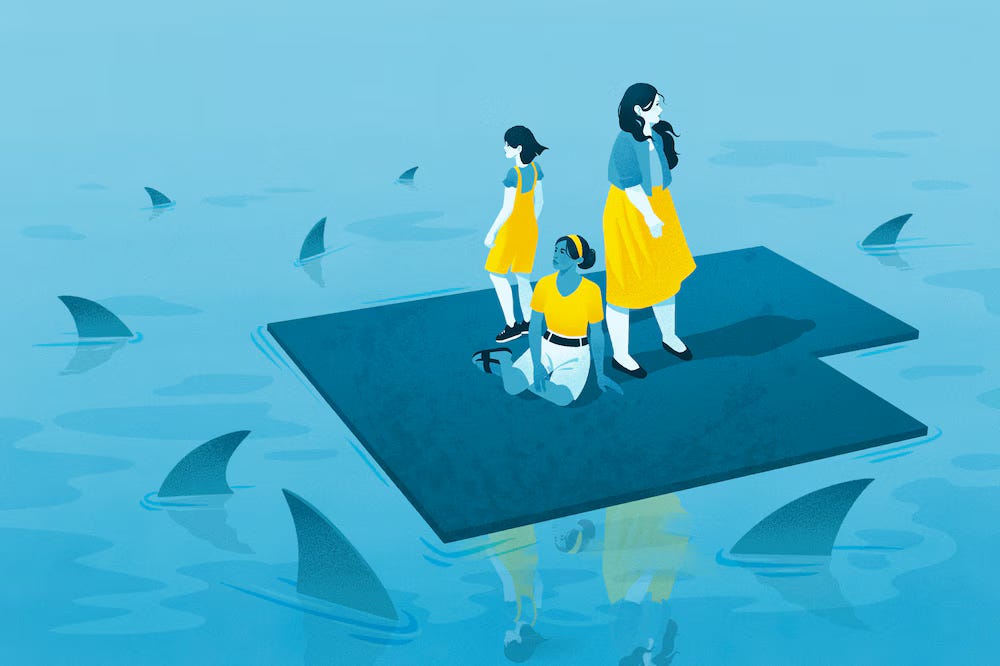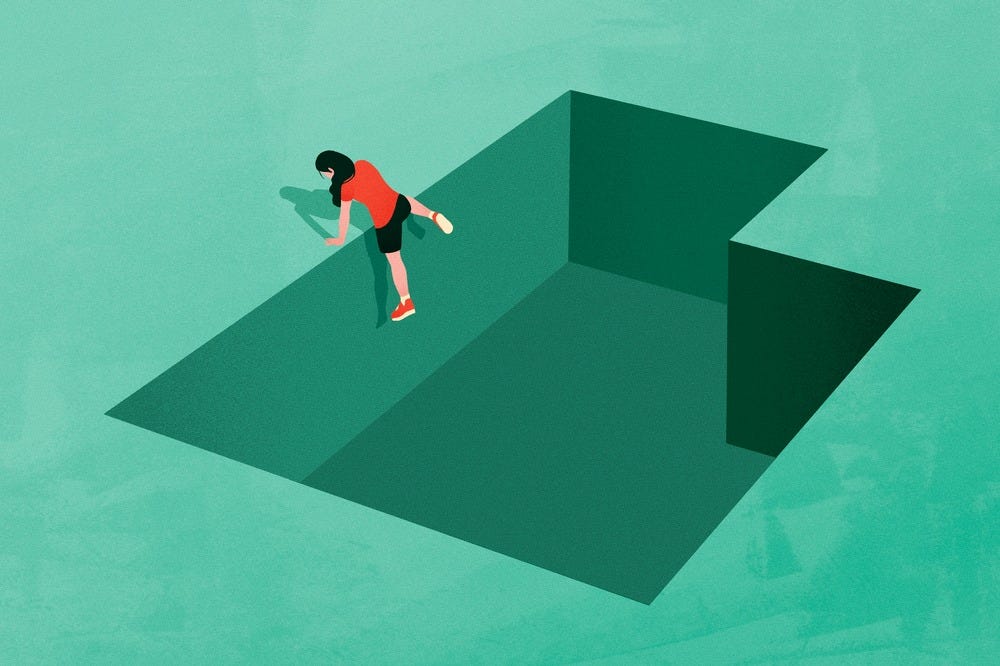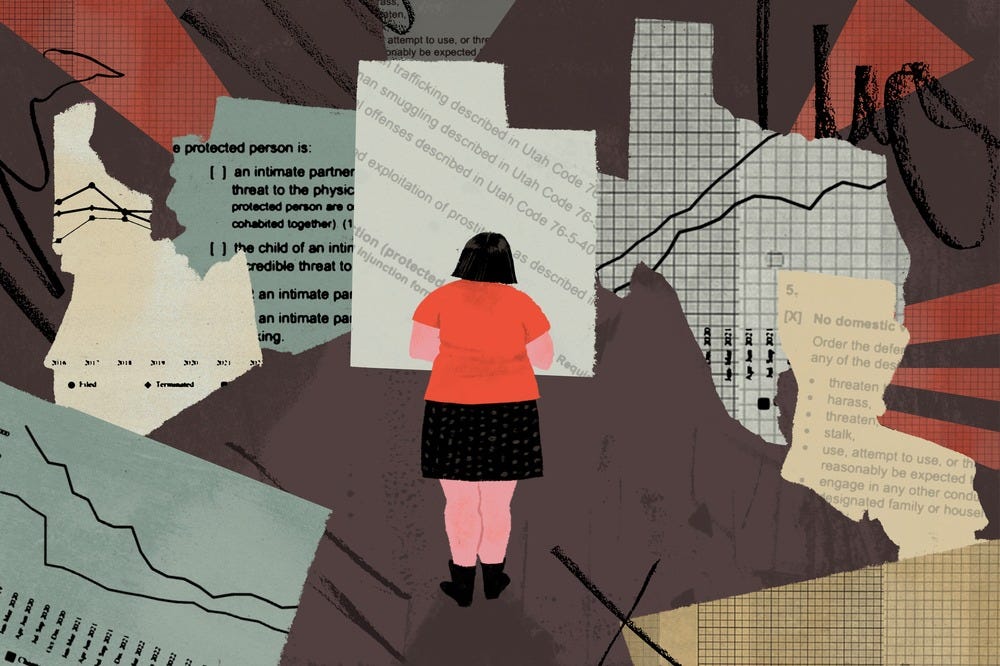Digging deeper on Utah abuse rates
Violence against women and children is too high everywhere, including in Utah. But the rates are different than you've probably heard online, as reflected in my latest reporting.
Photo by Richard Stachmann on Unsplash
Before police arrived on scene in Tremonton last weekend, police report that Ryan Michael Bate "slammed” his wife’s head with a door, then “grabbed her by the throat and pushed her against the wall.” Even as this terrified woman tried to calm her husband down, charging documents state “he repeatedly threatened to kill her."
Yet when the first officer spoke to this woman at the door, she "assured (him) there was no physical violence.”
Even in the middle of hell, this woman insisted under duress that all was well.
All is not well. Not in Utah - and not anywhere in the United States - when it comes to violence against women and children.
I don’t believe there is anything that causes God to weep more than a precious child or woman being hurt, degraded and abused.
Nothing.
And we should weep too. It’s the heartbreaking impact of abuse that prompted me to join a team studying domestic violence coalitions and public attitudes about holding perpetrators accountable twenty years ago at the University of Illinois.
This is also what motivated a small team I led in recent years to scour hundreds of risk factor studies to understand more clearly the social conditions that make sexual violence against women and children more likely (full report coming out this upcoming weekend). Those patterns highlight concrete strategies to proactively seek to reduce the same abuse, including:
Helping lift families and communities out of poverty
Expanding educational opportunities for both women and men
Helping nurture marriages and families that are healthy and happy
Providing additional support for younger and larger families
Helping to prevent compulsivity and support addicts in finding freedom
Encouraging the value of sexually-exclusive marriages and healthy, non-aggressive masculinity
Fostering deeper healing for mental health challenges
Helping those who have experienced earlier abuse to work through post-traumatic symptoms
Expanding robust community connections and durable social support
Fostering healthy spirituality and religious connection.
Seeking the truth about Utah rates
Many of these positive lifestyle elements are present in my home state in Utah, so why do media reports about Utah often suggest the state is a negative outlier in terms of sexual violence?
This is what many of us have been hearing for years, to the point of simply taking for granted that it must be true. It’s why I left abuse out of my Deseret News report last year on various positive statistics about Utah. But I’ve always still wondered, what’s going on?
Earlier this year, I came across the state-level report of a 2016-2017 survey called the National Intimate Partner and Sexual Violence Survey - representing the highest quality data we have on the subject. When I sorted the results by state, I was admittedly shocked. Even though every state in the nation has unacceptable levels of violence, the Utah levels recorded in this nationally representative study didn’t confirm the perceptions of Utah being “one of the worst states.”
Instead, in measure after measure, this survey seemed to suggest Utah was doing some things right. See for yourself, in this Deseret News summary of the findings report I did with BYU criminal justice expert Shima Baradaran Baughman:
What national sexual violence data says about the safety of girls, women in Utah
At the time I reviewed that survey, I had already been working with Stephen Cranney on a review of other data sources about abuse that were receiving less attention in public discourse:
Seeking a more comprehensive understanding of sexual violence in Utah
What surprised me just as much was when I learned that the FBI "strongly discourages" using their own criminal justice data as the basis for any state-level comparisons.
That’s significant because it’s these official crime numbers — most often without any mention of The National Intimate Partner and Sexual Violence Survey — which have been the central focus of public discourse on sexual violence in Utah for at least the last decade. They show up regularly in public and media conversation, academic reviews and reports, and even on official state websites and documents.
So as a third article, we summarized the various concerns about such widespread usage of that FBI data:
It’s time to stop relying on FBI data alone to compare sexual violence rates between U.S. states
I just wanted to make you all aware of these. But, to be clear, none of these findings should lead to all-is-well complacency. Just the opposite!
There’s so much more we can do as communities to work towards eradicating such abuse. How Utah or any state measures up to that number - ZERO - is the comparison that matters most, as one author of a new book on sexual violence told me last week.
And it’s why the very last take-away anyone should have from these findings is that abuse is somehow not a problem in Utah.
I repeat what we said in our series on sexual violence in Utah last week: “sexual violence remains a very serious and ongoing problem for individuals, families and communities virtually everywhere, including in Utah” - reflecting a “heartbreaking epidemic throughout the U.S. and world.”
“Even a single instance of abuse is too many,” we said to begin an earlier article.
The problem is important enough that an accurate picture of the scope of the problem is crucial. I hope our reporting will contribute to that clarity in a way that helps more people rally to protect women and children - taking it even more seriously than we have in the past.
Unfortunately, past messaging about Utah sexual violence data has been experienced by many as an attack on the state and its faith - due to insinuations (based on the FBI data) that Utah was one of the worst states. Perhaps this deeper dive on the data can clear the air a little, and help us move past such resistance.
Hopefully, we can all better appreciate that protecting women and children isn’t a partisan issue. It isn’t a “liberal” concern or a “conservative” concern. And it’s not a "non-religious” or a “religious” issue either.
It’s something that should unite us all.







Thank you for engaging the complexities of abuse reporting.
I hope you and everyone who cares about protecting the innocence in all of us, but especially children, join me at a rally, march, and prayer vigil on these issues on October 20th, 5:30pm mountain time, at Pioneer Park in Provo, Utah.
Yes we can all unite for moral goodness, truth and the pursuit of justice! ❤️🔥
https://www.soaarglobal.com/march-for-innocence